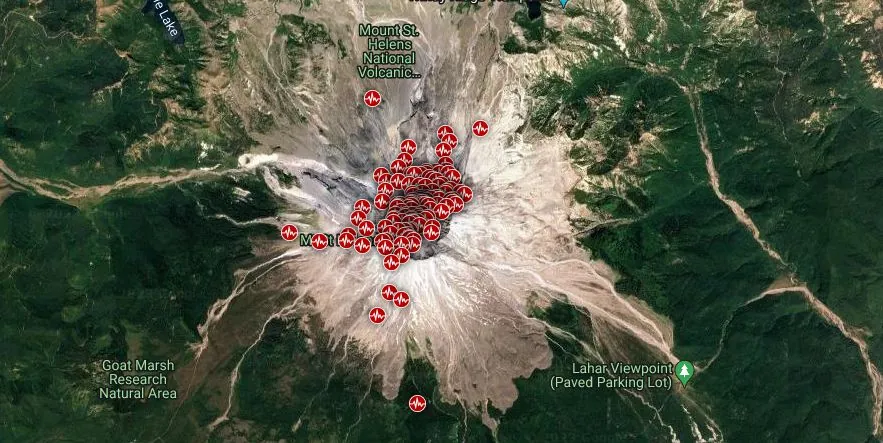Mount St. Helens experiences largest seismic increase since last eruption ended in 2008, US

Elevated seismic activity has been observed at Mount St. Helens in the United States since July 15, 2023 — representing the largest short-term increase in earthquake rates since the last eruption ended in 2008. No significant changes have been observed in other monitoring parameters and there are no signs of an imminent eruption.
Mount St. Helens has experienced a noticeable uptick in seismic activity over the past three months, with more than 400 earthquakes located by the Pacific Northwest Seismic Network since July 15. The frequency peaked in late August to early September, recording 40 to 50 earthquakes per week. In recent times, this figure has stabilized at around 30 earthquakes per week. For comparison, the average number of monthly earthquakes since 2008 is approximately 11.
The most substantial earthquake during this period registered at a magnitude of 2.4 on August 27. The depth of these seismic events ranged between 2 km and 6 km (1.2 and 3.7 miles) below sea level, translating to approximately 4 to 8 km (2.5 to 5 miles) below the crater floor. Despite the increased seismicity, no alterations have been observed in ground deformation, volcanic gas, or thermal emissions.
This recent activity marks the most significant short-term increase in earthquake rates at Mount St. Helens since the last eruption ended in 2008. Yet, the volcano remains at a normal Alert Level, and the Aviation Color Code is still Green. Past seismic sequences with even higher event counts occurred in 1988 – 1992, 1995 – 1996, and 1997 – 1999. None of these sequences led to eruptions.
The earthquakes are generally considered to be associated with the pressurization of the magma transport system. This pressurization can be caused by the arrival of additional magma, a process known as recharge. The volcano is fed by magma originating near the base of the crust at depths of about 25 km (~16 miles). This magma then ascends and accumulates in a reservoir situated 4 to 10 km (~2.5 to 6 miles) below sea level. Recharge events can trigger increased stresses that result in earthquakes.
There have been no significant changes in hazards at Mount St. Helens as a result of this activity.
Mount St. Helens has a complex geological history that spans tens of thousands of years. Prior to its devastating eruption in 1980 (VEI 5), the volcano exhibited a conical shape, earning it the nickname “Fujisan of America.” The 1980 event significantly altered the volcano’s topography by removing the upper 400 m (1 312 feet) of its summit through slope failure. This resulted in a 2 x 3.5 km (1.24 x 2.17 miles) breached crater, which has since been partially filled by a subsequent lava dome.
The volcano has seen nine major eruptive periods, with the earliest starting approximately 40 to 50 000 years ago. Its activity during the Holocene epoch has made it the most active member of the Cascade Range, a mountain range that includes several other volcanoes.
The older edifice of Mount St. Helens was primarily formed through the eruption of tephra, lava domes, and pyroclastic flows. These eruptions took place before 2 200 years ago and contributed to the mountain’s structure, although few lava flows extended beyond its base at that time. The modern edifice consists of a variety of geological materials, including basalt as well as andesitic and dacitic products, originating from both the summit and flank vents.
Eruptions in the 19th century were notably different, originating from the Goat Rocks area on the northern flank of the volcano. These eruptions were among the first to be witnessed by early settlers in the region.
References:
1 CASCADES VOLCANO OBSERVATORY INFORMATION STATEMENT U.S. Geological Survey
– Monday, October 30, 2023, 22:53 UTC
2 Mount St. Helens – Geological summary – GVP
Featured image credit: TW/SAM, Google (Data source: IRIS)

Commenting rules and guidelines
We value the thoughts and opinions of our readers and welcome healthy discussions on our website. In order to maintain a respectful and positive community, we ask that all commenters follow these rules.